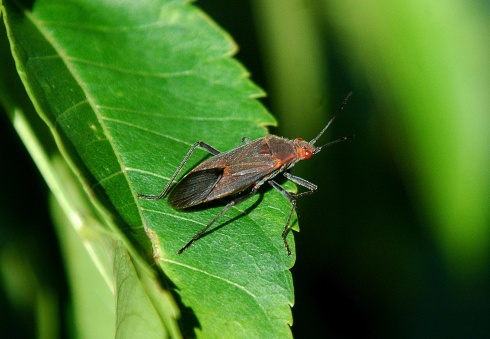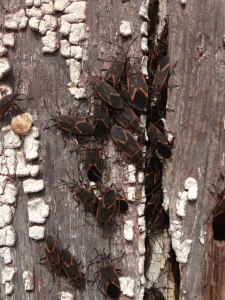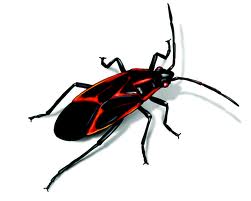Okay, so sometimes life is stranger than fiction. I just did the post about the boxelder bugs my friend back in the States found and today on my little tree in the backyard (while stalking a praying mantis) I saw a bug that, by all accounts, was a twin of the boxelder. The problem? I live in Australia and as far as I know there are no boxelder trees (or ash or maples) here. So, of course it had to be a completely different bug, right? Weird. So my curiosity got the better of me and I had to find out what it was. Here’s a close up of the bug.
It took me a minute to figure this one out. I had it pegged as some sort of a Eucalyptus bug and then stumbled across one of my favourite insect pages www.brisbaneinsects.com (not sure why I don’t just go there first) and found out that I had spotted what’s known as the Red Eye Bug. Well, actually it’s called Leptocoris Tagalicus, but I promised no fancy stuff on this blog…for the most part.
Here’s the clincher: This bug is in the SAME family as the boxelder! The Rhopalidae family, also known as the scentless plant bugs.
It’s name is fitting considering its eyes are actually red, if you zoom in. They are found on plants (and trees apparently) and feed on the flowers and seeds of certain ones. There are two types of these bugs, the Red Eye Bugs and the Ground Red Eye Bugs. From my research, they say it is hard to distinguish between the two. But, as you probably guessed, the Ground Red Eyes can be found (drum roll) on the ground where they feed on ripe, fallen seeds. Since this guy was on my tree, I’m assuming he is just the Red Eye Bug. (That it’s a ‘he’ is also an assumption 😉 )
So, there ya go. Cousins found on two separate continents within a couple of days. And had it not been for my shy praying mantis, I may have never found it at all.





